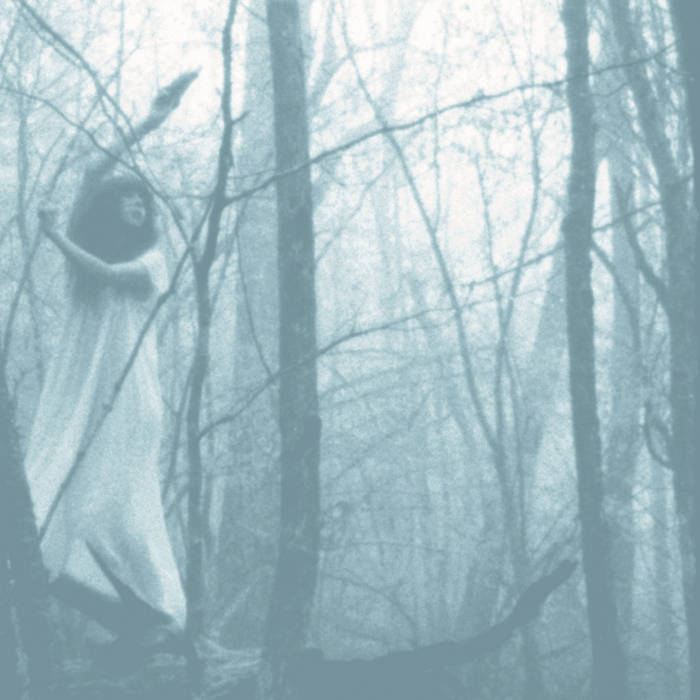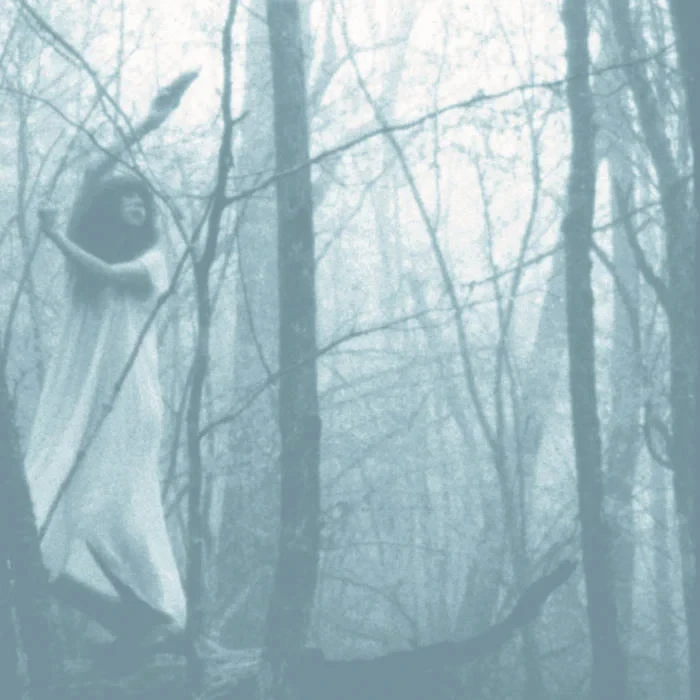https://yaraasmar.bandcamp.com/album/everyone-i-love-is-sleeping-and-i-love-them-so-so-much

“Most recorders were one track. The one I have has 4 tracks. I slaved away for so long before I could afford it! I dreamt of it for so long. Every time I passed in front of the store, I would look at it. One day, we were recording outside on the microphones. We were recording using the condenser microphone. I had two so I could record in stereo. They ended up recording both the sound of birds and the music we were trying to actually record. When we finished, we started listening and realised the sounds of the birds were much louder than the actual songs. The sounds ended up being blended. There were all kinds of birds in these recordings. Lovebirds. They sounded like bicycle horns. Their legs and beaks were red. There was also the cut-throat finch. A bird that looks like its throat had been slit because of the red line there. Remember it? They died during the war. Their ears exploded. Every morning we’d wake up and find 7-8 dead birds. Because of the shelling and the sounds of the explosions.”
This is one of the last recordings I have of my grandfather, telling me about how he accidentally recorded hours and hours of birdsong onto his reel-to-reel recorder. On my recorder, you’ll find hours and hours of conversations: My grandmother proudly telling me about how she scared off a man who was threatening her with a gun during the war, my grandfather telling me I could come by any time and pick any herbs from his garden, our first lunch after my grandfather’s funeral, the first time that house that had grown quiet was suddenly animated with laughter and song. They are files all labelled by date. January 1, 2025, midnight. An explosion of sound: Fireworks, screams, gunshots, laughter, sirens.
I am standing on my quiet balcony, against the city that unfurls like a big sonic carpet. There is a betrayal to being alive because it means to have outlived. I don’t know what it means to constantly be recording out of fear of loss, only that it has been the only way forward, and the only thing that makes sense to me.
I have spent the past year in a bit of isolation, between Alfred, New York and Beirut, Lebanon, working with the sounds and objects that have long fascinated me. Being in New York meant finally having access to objects I’d only been able to dream of before. One of them being the symphonion, or disc-playing music box. The mechanism is pretty straight-forward: A motor drives the disc and the holes in the disc pluck the corresponding tooth on the music box comb, producing the sound. These machines use perforated discs, a kind of rotational script, a translation of information into sound through a binary system of absence and presence. Once I started making the discs, I had the idea of engraving text into the discs to listen to the resulting music. I spent a good portion of that year disassembling some old symphonions and mounting the mechanisms onto resonance cases I would build. The boxes got increasingly bigger until I eventually made a box I could sit inside. So I could “sit inside the sound”. I started making my own discs for the boxes, eventually arriving to a point where I engraved poetry into these discs in order to have the music boxes “translate” the text. I also continued working on the disassembled toy pianos I’ve been working with the past few years, which I find particularly fascinating because of the range of overtones they can produce, specifically when they are bowed.
When I first released home recordings, it had felt to me like a bit of a mess of sound and seemingly disconnected instruments. With the years that followed and more experimentation, I started slowly closing all the open loops, and understanding what it was about this mess of sounds that I operated in the middle of. For starters, the objects were all metallic, with the exception of the accordion(which I could also say, creates its sound through the vibrations of metallic reeds). And so if the years that followed confirmed anything, it was that I truly was compelled by metal and its sonic properties, and whatever I did, I found myself coming back to it. I’ve tried to pinpoint exactly why – especially in the past year.
One of my earliest memories is that of my cousin telling me how viscerally the sound of a fork scratching on a plate disturbed her. The metallic sound is one that irks and haunts. It can, in an overwhelming blanket of noise disturb the listener, but can also nestle itself in the peripheral ear, noticeable only when it is interrupted. In “of the always puzzle” I use the rods of two toy pianos I found at the Sunday market a few years apart but that somehow seemed connected through a wonderful sort of temporal thread. What I find so wonderful about toy pianos is how each one is tuned a little differently. Maybe it’s the rust, maybe it’s because they were “just toys” and so it wasn’t very important to have them all be tuned the same. But these two sets of rods I found had such a strange relationship to each other sonically; I built a little resonance case for them and installed them onto it. One of the sets of rods sounded completely different when it was bowed from the top and when it was bowed from the bottom. I spent hours bowing the same rod and it sounded different every single time. This recording might initially sound like it’s built through loops, but it was really just me bowing incessantly, over and over again.
A while back I was having a conversation with one of the professors in the expanded media department at the New York State College of Ceramics at Alfred University (and an artist whose work I truly admire), Andrew Deutsch, about vibratory potential and what it means to listen for what metal itself might articulate when set into motion. I told him I’d always been fascinated by metal and its sound properties, the different timbres that can be extracted from the material through bowing, plucking, rubbing, striking. He said that Tony Conrad might have called this “sitting inside the sound”. In another conversation with Andrew, I expressed my frustration working with music boxes at their tendency to instantly and irrevocably direct the attention towards melancholia; I wondered if it was hopeless working with an object that has such a strong nostalgic affect. The sound of a music box is immediately familiar, embedded in the collective sensorium. It is a sound that arrives pre-encoded, its fragility linked to nostalgia, its timbre already burdened with sentimentality. “You want to take the nostalgia out of the music box?”, Andrew asked, “Well then, set it on fire”. I laughed, to which he insisted “No really. Set it on fire”. (I didn’t).
This record is not a nostalgic record, though it may be easier to frame it that way. There is no future to yearn for and the past does not exist as fas as I’m concerned. There is a big, sprawling, horrifying present that eats everything in its path. This collection of recordings is very deeply rooted in the present, in the sounds that make their way into my home that I work so hard to keep quiet, the voices that I carry in my pocket, and the sounds I find refuge in. It has been a year of grief and a year of exploration. A lot of questions have been asked and I don’t think I’ve managed to answer any. This is a collection of recordings for anyone who would like to sit inside the sound with me. And if you’re ever in Alfred, New York, you are welcome inside the box.
Yara Asmar, August 2025, Alfred, New York
